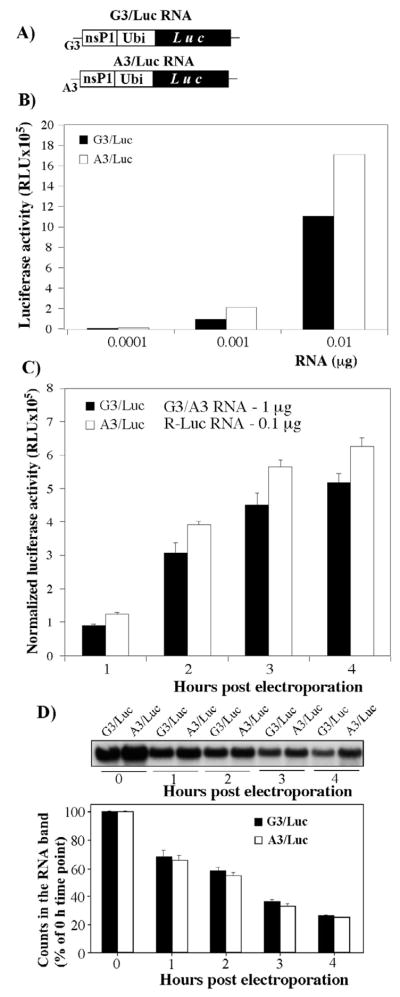Fig. 3.
Analysis of the effect of G3A mutation on the RNA translation efficiency. (A) The schematic representation of the firefly luciferase constructs used to evaluate the effect of G3A mutation on the template translation. The detailed description of the constructs is presented in Materials and Methods. (B) Luciferase activities in the RRL reaction mixtures, supplemented with different amounts of in vitro-synthesized G3/Luc and A3/Luc capped template RNAs. (C) Firefly luciferase expression in BHK-21 cells transfected with the in vitro-synthesized, capped G3/Luc or A3/Luc RNA. One μg of each template was mixed with 0.1 μg of Renilla luciferase-encoding RNA, and electroporated into BHK-21 cells, as described in Materials and Methods. Equal aliquots of transfected cells were seeded into 35-mm dishes, and luciferase activities were determined at indicated time points using a Dual-Luciferase system (Promega). The activity of Renilla luciferase was used to normalize the data. (D) Analysis of the effect of the G3A mutation on RNA stability. Cells were transfected with similar amounts of 32P-labeled G3/Luc or A3/Luc labeled RNAs. At indicated time points, total RNAs were isolated and analyzed by agarose gel electrophoresis under denaturing conditions. Radioactivity in the RNA bands was evaluated on a phosphorimager. The experiments presented in panels B and C were repeated 2 and 3 times, respectively. One of the highly reproducible experiments is presented.

